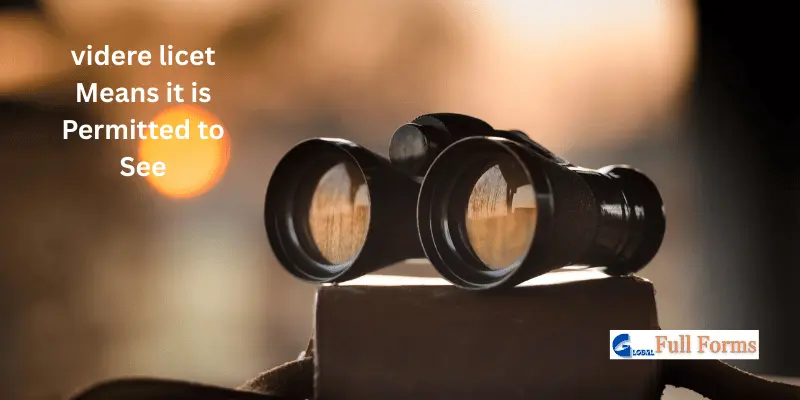VIZ Full Form in English and Hindi
Published: May 8, 2025
Find out with me the VIZ full form in detail. Have you ever come across the abbreviation “viz.” while reading a book, article, or legal document and wondered what it means?
Don’t worry; you’re not alone! The full form of viz. is something many people are curious about, and it has a fascinating origin.
In this post, we’ll explore what “viz.” stands for, how it’s used, and why it’s still relevant today. So, let’s dive in and clear up the mystery!
What Does It Stand For?
The abbreviation viz. stands for the Latin phrase “videre licet,” which translates to “it is permitted to see” or “namely.”
It is often used in English to introduce specific details, examples, or explanations about something that was mentioned earlier in a sentence.
Unlike other abbreviations like “e.g.” (which means “for example”) or “i.e.” (which means “that is”), viz. serves a unique purpose.
It provides a focused list or elaboration to clarify or highlight particular elements.
Example in Context
Sentence with viz
“The committee discussed several important topics, viz., budget allocation, employee benefits, and future projects.
Explanation: Here, “viz.” introduces the specific topics discussed by the committee.
Why Use “Viz.”?
- Clarity: It helps in presenting information concisely and clearly.
- Formality: It is widely used in academic, legal, and professional writing where formal expression is required.
- Efficiency: Instead of using longer phrases like “namely” or “which are,” “viz.” provides a shorter alternative.
Origin and Usage
The roots of “viz.” lie in classical Latin, where videre licet emphasized providing further insight or making something explicitly visible.
Over time, it became an accepted abbreviation in English, carrying the same essence of elaboration and specification.
Understanding its meaning and correct usage can add a formal and polished touch to your writing, making it more precise and professional.
Full Form of V.I.Z in English

The full form of viz. is videre licet, a Latin phrase that means it is permitted to see or, namely.
It is used as a shorthand way to introduce examples, elaborate on a point, or provide specific details about something mentioned earlier in a sentence.
Understanding the Full Form
- Videre: This Latin word translates to “to see” or “to view.”
- Licet: This word means “it is allowed” or “it is permitted.”
Together, they imply giving the reader permission to “see” or “consider” further information that follows.
Usage in English
In modern English, “viz.” is commonly used to:
- List specific items or examples in formal texts.
- Clarify details in legal, academic, or technical contexts.
Example Sentences
Academic Use
“The study focused on three major areas, viz., human psychology, behavior analysis, and cognitive science.”
Explanation: Here, “viz.” introduces the key areas of focus in a study.
Legal Use
“The contract explicitly covers three types of breaches, viz., negligence, fraud, and misrepresentation.”
Explanation: The abbreviation specifies the breaches that are covered in the contract.
Why Is “Viz.” Still Relevant?
While Latin phrases like videre licet might seem old-fashioned, their use continues in modern English due to their precision and conciseness.
“Viz.” allows writers to save space and time while maintaining clarity, especially in documents where specificity is crucial.
Understanding and using the full form of viz. effectively can make your writing look more professional and formal, particularly in academic and legal settings.
V.I.Z Full Form in Hindi
V.I.Z का फुल फॉर्म है “विडेरे लाइसेट” (Videre Licet), जो एक लैटिन वाक्यांश है। इसका अर्थ होता है “देखने की अनुमति है” या “अर्थात।” इसका उपयोग किसी वाक्य में उदाहरण देने या पहले बताए गए विषय को स्पष्ट करने के लिए किया जाता है।
फुल फॉर्म का विस्तृत अर्थ
- विडेरे (Videre): यह लैटिन शब्द “देखना” या “अवलोकन करना” का संकेत देता है।
- लाइसेट (Licet): इसका अर्थ होता है “अनुमति है” या “स्वीकृति है।”
इन दोनों शब्दों का संयोजन यह दर्शाता है कि पाठक को आगे की जानकारी देखने या समझने की अनुमति दी जा रही है।
हिंदी में उपयोग
“V.I.Z” का उपयोग मुख्य रूप से औपचारिक लेखन, जैसे कि कानूनी दस्तावेज़ों, अकादमिक शोध, और तकनीकी लेखन में होता है। इसे किसी विषय को विस्तार से स्पष्ट करने के लिए इस्तेमाल किया जाता है।
उदाहरण
- शैक्षणिक:उपयोग “यह अध्ययन मुख्य रूप से तीन क्षेत्रों पर केंद्रित है, अर्थात् (V.I.Z), मानव मनोविज्ञान, व्यवहार विश्लेषण और संज्ञानात्मक विज्ञान।”
- स्पष्टीकरण: यहाँ “V.I.Z” का उपयोग उन तीन मुख्य क्षेत्रों को बताने के लिए किया गया है, जिन पर अध्ययन केंद्रित है।
कानूनी उपयोग
“अनुबंध में उल्लिखित तीन प्रकार के उल्लंघन शामिल हैं, अर्थात् (V.I.Z), लापरवाही, धोखाधड़ी और गलत प्रस्तुति।”
स्पष्टीकरण: यहाँ “V.I.Z” के माध्यम से उल्लंघन के प्रकारों को स्पष्ट रूप से बताया गया है।
“V.I.Z” क्यों उपयोगी है?
- स्पष्टता: यह जानकारी को सरल और स्पष्ट रूप से प्रस्तुत करता है।
- संक्षिप्तता: लंबे वाक्यांशों की जगह लेने के लिए यह संक्षिप्त और प्रभावी विकल्प है।
- औपचारिकता: यह लेखन को अधिक पेशेवर और औपचारिक बनाता है।
इस प्रकार, V.I.Z का फुल फॉर्म “विडेरे लाइसेट” औपचारिक और तकनीकी लेखन में एक महत्वपूर्ण भूमिका निभाता है, जिससे जानकारी को प्रभावी तरीके से प्रस्तुत किया जा सकता है।
FAQs
The full form of V.I.Z is “videre licet.” It is a Latin phrase meaning “it is permitted to see” or “namely.” It is used to introduce specific details or examples related to a preceding statement.
“Viz.” is most commonly used in formal writing, such as academic papers, legal documents, technical reports, and professional communication. It helps clarify or elaborate on a statement by listing examples or specific details.
E.g. (exempli gratia) means “for example” and is used to introduce examples.
I.e. (id est) means “that is” and is used to rephrase or explain something more precisely.
Viz. (videre licet) is used to provide a detailed list or clarification about something mentioned earlier.
Example:
E.g.: “The shop sells many items, e.g., books, clothes.”
I.e.: “The shop sells one type of product, i.e., books.”
Viz.: “The shop sells specific products, viz., books, stationery, and accessories.”
No, “viz.” is better suited for formal contexts. In informal writing, simpler terms like “namely” or “that is” are often preferred as they are more reader-friendly.
“Viz.” should always be followed by a comma in formal English, as it introduces examples or details. For example:
Correct: “The report covered three areas, viz., production, marketing, and sales.”
Incorrect: “The report covered three areas viz production, marketing, and sales.”
Conclusion
The abbreviation “viz.” stands for “videre licet,” a Latin phrase meaning “namely” or “it is permitted to see.”
It’s a helpful tool for adding examples or clarifications in formal writing, especially in academic, legal, and technical documents.
While it’s concise and precise, it’s best used in formal contexts.
Understanding how to use “viz.” correctly can make your writing clearer and more professional.
However, for informal writing, simpler words like “namely” might be more suitable. Keep it in your writing toolkit for occasions when clarity and formality are key!
Extra Points About “Viz.”
Always Use a Period: Since “viz.” is an abbreviation, always include a period after it to maintain correct grammar.
- Follow It With a Comma: When using “viz.” in a sentence, place a comma right after it to introduce the examples or details clearly.
- Best for Formal Writing: “Viz.” is commonly used in formal contexts like legal documents, academic papers, and reports. For casual writing, words like “namely” or “for example” are easier to understand.
- Not Interchangeable with E.g. or I.e.: Remember, “viz.” is used for detailed clarification, while “e.g.” is for examples and “i.e.” is for explanations. Use them correctly to avoid confusion.
- Origin Adds a Formal Touch: Since “viz.” comes from Latin, it adds an elegant and formal tone to your writing, making it look professional and polished.
- Use it Sparingly: Overusing “viz.” can make your writing feel overly formal or stiff. Use it only when necessary to clarify or provide detailed examples.

- Be Respectful
- Stay Relevant
- Stay Positive
- True Feedback
- Encourage Discussion
- Avoid Spamming
- No Fake News
- Don't Copy-Paste
- No Personal Attacks

- Be Respectful
- Stay Relevant
- Stay Positive
- True Feedback
- Encourage Discussion
- Avoid Spamming
- No Fake News
- Don't Copy-Paste
- No Personal Attacks





